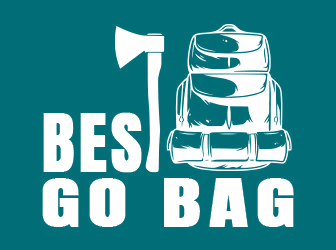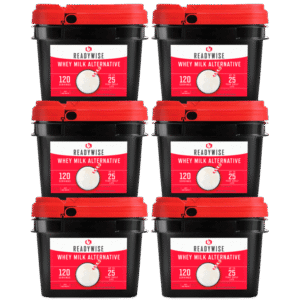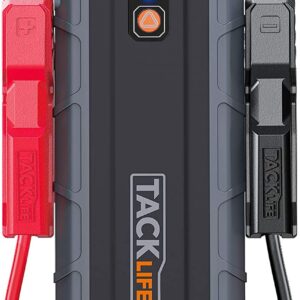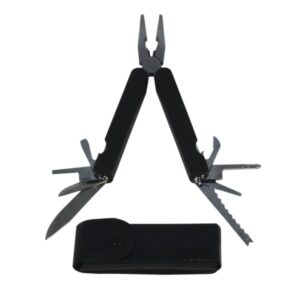Preparedness Notes for Sunday — August 28, 2022
August 28, 1833 is the anniversary of the abolishment of slavery throughout the British Empire. — SurvivalBlog Writing Contest Today we present another entry for Round 102 of the SurvivalBlog non-fiction writing contest. The prizes for this round include: First Prize: The photovoltaic power specialists at Quantum Harvest LLC are providing a store-wide 10% off […]
Weaponizing the Bureaucracy: Who Will Protect Us?, by John and Nisha Whitehead
“A standing military force, with an overgrown Executive will not long be safe companions to liberty.”—James Madison The IRS has stockpiled 4,500 guns and five million rounds of ammunition in recent years, including 621 shotguns, 539 long-barrel rifles and 15 submachine guns. The Veterans Administration (VA) purchased 11 million rounds of ammunition (equivalent to 2,800 […]
What to Do – and Not to Do – During a Flash Flood
The recent deadly flooding in Kentucky got me thinking there are probably many people who wouldn’t know what to do if they suddenly got caught in a flash flood.
Slow-moving thunderstorms dumped massive amounts of rain across the eastern portion of the Bluegrass State in late July. Many residents drowned from floodwaters, which damaged or destroyed hundreds of homes and vehicles.
As rivers and creeks rose out of their banks, hundreds of rescues occurred via boats and helicopters. Some people waited on roofs and up in trees until help came.
Unfortunately, at least 37 died during the flooding. Kentucky Governor Andy Beshear predicted that more bodies will be found.
Have your supplies ready and waiting
As we continue our theme of “Back to Survival School,” I thought this would be a good time to talk about ways to deal with flash floods.
If we have these strategies ingrained in our minds, they’ll be second nature when we’re faced with the situation. And that’s crucial with flash floods. They occur quickly with little warning, so acting fast is important.
Well before a flash flood is a possibility, make sure your bug-out bag and vehicle emergency kit are well-stocked and handy.
Consider in advance everything you might need in order to deal with a flash flood and include all those items in your preparations.
Know the difference between watch and warning
If you believe a flash flood is a possibility, remember your flood safety warning signs. A flood or flash flood “watch” means a flood or flash flood is possible in your area.
A flood or flash flood “warning” means flooding or flash flooding is already occurring or will occur soon in your area.
Move immediately to higher ground or remain on higher ground. Stay tuned for possible evacuation orders.
If you’re on foot and come to a flowing stream, stay out of it. Even if the water is not deep, it could push you toward deeper water.
Prepare your family and home
If you believe your home might become a victim of flooding, there are some things you can do in advance.
First, create a family emergency plan and make sure everyone in your household knows what their responsibilities are. The plan should also include a place to meet if you’re separated.
Tie down or bring inside outdoor objects that could be damaged or swept away by flood waters. Including patio furniture, trash cans and children’s toys.
Unplug sensitive electronic equipment. Elevate any items that would be rendered useless by exposure to water. Make sure your sump pump is working properly.
Cautions when arriving back home
If you evacuated during a flash flood but now wish to return, first check with authorities to make sure it’s safe to do so.
Watch out for loose power lines, damaged gas lines and cracks in your home’s foundation before re-entering. If you smell natural or propane gas or hear a hissing noise, leave immediately and call your local fire department.
When cleaning up your home – inside and out – following a flood, wear protective clothing including a facemask, rubber boots and rubber gloves.
Check on neighbors and friends to make sure they’re OK. Especial the elderly, those who live alone and those with medical conditions.
Turn around; don’t drown
What if you’re in your car when waters start rising quickly? There are some things you can do to increase the odds that you will stay safe.
First of all, if you know water is starting to inundate roads ahead of you, follow the advice of the National Weather Service. They launched a campaign on this subject called “Turn Around Don’t Drown.”
You might think your vehicle can pass through water that’s a foot or less deep, but there are two problems with that.
One is that the water might be deeper than you think. The other is that even one foot of water can carry a car away. And pull that car into deeper areas. Maybe even completely submerging it.
Escape from your vehicle
Mike Berna is a regional director and instructor with the Rescue 3 international group. They provide training to emergency services.
He said that if you suddenly find yourself in deep waters while driving, undo your seatbelt in case the vehicle flips over.
Roll a window down just a bit, which will make it easier to break if necessary. Don’t immediately try to get out of your car. You may be safer in it than wading or swimming in waters that could push you toward other vehicles or rocks.
If the vehicle starts to fill with water, however, you’ll need to get out. If you can’t get a door or window open far enough, smash a window with a hammer or other tool.
Liberty Band Solar Radio
Of course, whether you are on foot or in a car when a flash flood is a possibility, your best bet is to keep on top of emergency warnings. And heed those warnings by getting to higher ground as soon as possible.
And the best way to stay informed with timely news is with a reliable weather radio. A NOAA weather radio is a great way to learn about – and avoid – flooding and threatening weather.
Having access to critical information is key to surviving in any emergency. These radios broadcast official National Weather Service warnings 24/7. Plus watches, forecasts and other hazard information.
4Patriots has created the ultimate tactical information hub. It’s the Liberty Band Emergency Solar Radio. This lightweight radio features NOAA weather alerts. And it recharges with the sun.
It has seven 24/7 weather channels and AM/FM and shortwave radio. Plus LCD display clock with alarm and an ultra-bright flashlight. It can even power your cellphone when you need it most.
Summer means flash floods, hurricanes, tornados and other severe storms. The Liberty Band will provide you with the advance notice you need to seek shelter.
Household Hacks You Should Know
When it comes to life-saving gear, you are limited only by your imagination – and your commitment to use it. Luckily, there are plenty of versatile items you already own that can double as survival gear.
Continuing our “Back to Survival School” theme for this week, here are some items – combined with knowledge of basic survival skills – that may one day give you the advantage in a survival situation.
- Aluminum foil. Great for signaling, it can create a bowl for cooking, or when connected to each side of a battery can be used to start a fire.
- Bag of chips. Because of their oily nature, it can make a signal fire.
- Bandana. Fanning smoke signals, bandages, signaling.
- Batteries. Can never have enough of these and other than the obvious are great for starting fires.
- Bed sheets. Shelter, clothing, signaling.
- Bleach. Great for disinfecting and can be used to make unsafe water potable.
- Bra. The cup of a bra makes an effective facemask when in a toxic or dusty/smoke-filled environment.
- Cans (food/coffee). Makes a much-needed makeshift stove or fireplace.
- Chapstick. A nice little candle when a cotton wick is inserted into the middle. Also ideal for making things waterproof.
- Coffee filters. Filter dirty water, toilet paper, bandage.
- Cotton balls. First-aid or tinder for fire.
- Dental floss. Can be used as fishing line or to make a snare.
- Duct tape. You name it. Pound for pound the best.
- Frozen bag of veggies. Ideal for use as an ice pack to reduce heat/swelling.
- Hand sanitizer. Other than the obvious, great on cuts and to start a fire.
- Pantyhose. Can be used as a fish net and to help filter water.
- Plastic bottle. Good for storage, and you can make a solar still by cutting the bottom off, folding it inward, placing upside down and being patient.
- Pop can. Can make a fishing rod by wrapping with dental floss and the tab can be made into a fishing hook.
- Salt. Can preserve food and be used as an antiseptic for sore throats.
- Socks. The thin liner socks are great to prevent blisters and are also ideal for water filtration.
- Trash bags. Outstanding raincoat, water collection and shelter.
The true sense of the word “improvise” means you could take just about anything and make it help you survive. Be creative and never quit.
HaloXT Tactical Flashlight
Speaking of items that can provide you with more than one usage, I’d like to remind you of our HaloXT Flashlight with its nine functions.
In addition to its light functions, this tactical flashlight has small solar panels so you can charge it with just the power of the sun. As well as a glass breaker, a seatbelt cutter and a compass. The HaloXT also has an anti-slip handle and an adjustable wrist strap.
Despite the fact that it’s small, lightweight and easy to handle, it’s extremely sturdy. That’s because it’s made from aluminum alloy. It can handle abuse. And that includes dropping it on the floor or ground, and banging it against something.
It will continue to perform perfectly. This flashlight is weather-resistant, shock-resistant and corrosion-resistant. It even includes a magnet so you can secure it to your car and use both hands to work.
Here’s how you can get yours… or better yet, several of them.
Writing Contest Prize Winners Announced – Round 101
We’ve completed the judging for Round 101 of the SurvivalBlog non-fiction writing contest. The prize winners are: First Prize: First prize goes to J.M., for Basic Electronic Repair – Part 1 and Part 2. (Posted July 29-30, 2022.) He will receive the following prizes: The photovoltaic power specialists at Quantum Harvest LLC are providing a […]
Today Marks Anniversary of First U.S. Air Force Day
One hundred and fifteen years ago today, the U.S. War Department created what eventually became known as the Air Force.
Air Force Day was officially established on this day (August 1) in 1947 by President Harry S. Truman “in recognition of the personnel of the victorious Army Air Forces and all those who have developed and maintained our nation’s air strength.”
With the announcement, Truman was marking the 40th anniversary of the establishment in 1907 of what was then known as the Aeronautical Division in the Office of the Chief Signal Officer of the Army.
Because the Air Force was originally part of the Army, the celebration of the first Air Force Day was staged by the Army Air Forces rather than the U.S. Air Force.
Truman Provides Reminder to Americans
World War II had ended in 1945, and Truman and other governmental officials wanted to make sure the American public was aware of the large role the Air Force had played in the Allies’ victory over the Axis powers.
The original pronouncement read in part that the Air Force Day celebration was a need to increase “both official and public awareness of the priority of importance of air forces in any system of national security.”
Truman stated, “The great strategic fact of our generation is that the United States now possesses live frontiers – the frontiers of the air – and that the oceans are no longer sure ramparts against attack.”
His message to the nation continued. “I remind all of our citizens that the air power of the nation is essential to the preservation of our liberty, and that the continued development of the science of air transportation is vital to the trade and commerce of a peaceful world.”
Air Force Gains Unique Identity
This increased awareness of the crucial nature of air superiority brought the Department of Defense closer to establishing what we now know as the U.S. Air Force.
Just seven weeks later – on September 18 – the National Security Act of 1947 was passed. That made the U.S. Air Force a separate but equal member of the United States Armed Forces. And that’s why September 18 is now considered the Air Force’s birthday.
Now with a unique identity, the Air Force established its own uniforms, command structure and organization. Tactical commanders no longer reported to superiors with no flying experience.
But the Army was not quite ready to relinquish all its air activities. They used helicopters in the Korean and Vietnam Wars and eventually weaponized helicopters. In 1983, the Army Aviation Branch was born.
Balloons Got It All Started
For those who like to dig deeper into the past, the original “seed” of the Air Force might have been planted in 1861. That’s when the Union Army Balloon Corps was created for reconnaissance.
During World War I, balloons were used for observation purposes. Including submarine spotting.
Eventually, balloons were replaced by propeller aircraft, fixed-wing aviation and helicopters.
The Army Signal Corps, the Division of Military Aeronautics and the Army Air Service controlled U.S. aeronautic and aviation activities prior to and during World War I. The Army Air Corps and Army Air Forces were in charge prior to and during World War II
6 Core Missions
One of eight U.S. uniformed services, the Air Force has six core missions. They are air supremacy, global integrated intelligence, surveillance and reconnaissance, rapid global mobility, global strike, and command and control.
In addition to conducting independent air operations, the Air Force provides air support for land and naval forces, and aids in the recovery of troops.
According to 2017 statistics, the Air Force operates well over 5,000 military aircraft and 400-plus ICBMs.
There are approximately 330,000 active-duty airmen, 170,000 civilian personnel, nearly 70,000 reserve airmen and more than 107,000 National Guard airmen.
Military Operations
The U.S. Air Force has been involved in numerous wars, conflicts and humanitarian operations through the years.
Military operations have included the Mexican Expedition in 1916-17, World Wars I and II, and the Korean, Vietnam, Gulf, Afghanistan and Iraq Wars.
Others include Operation Eagle Claw, the Iran hostage rescue attempt in 1980; Operation Urgent Fury, the invasion of Grenada in 1983; Operation El Dorado Canyon, the bombing of Libya in 1986; and Operation Just Cause, the invasion of Panama in 1989-90.
In addition, there was Operation Southern Watch, the 1992-2003 Iraq no-fly zone; Operation Deliberate Force, the NATO bombing in Bosnia and Herzegovina in 1995; Operation Desert Fox, the bombing of Iraq in 1998; and Operation Odyssey Dawn, the Libyan no-fly zone in 2011.
Humanitarian Missions
As mentioned, the U.S. Air Force has also been involved in a number of humanitarian efforts.
They include the Berlin Airlift in 1948-49, also known as Operation Vittles; Operation Safe Haven in 1956-57, following the Hungarian Revolution; and Operation Babylift in 1975, evacuating children from South Vietnam.
Others include Operation Provide Comfort, defending Kurdish refugees fleeing northern Iraq; and Operation Sea Angel, relief efforts following the Bangladesh cyclone, both in 1991.
Plus Operation Provide Hope, delivering medical equipment to former Soviet republics during their transition to capitalism in 1992-93; Operation Unified Assistance, a response to the Indian Ocean earthquake and tsunami in 2004; and Operation Unified Response, following the 2010 Haiti earthquake.
Air Force Day is now celebrated as part of Armed Forces Day in May, but August 1 will always be remembered as the original Air Force Day and the branch’s original creation in 1907.
Preparedness Notes for Saturday — July 16, 2022
July 16th is the anniversary of the death of Hugh John McCall, in Rhodesia, in 1979. — SurvivalBlog Writing Contest Today we present another entry for Round 101 of the SurvivalBlog non-fiction writing contest. The prizes for this round include: First Prize: The photovoltaic power specialists at Quantum Harvest LLC are providing a store-wide 10% […]
4Patriots Donates to Operation Homefront’s Star Spangled Babies Program
Due to deployments and frequent relocations, military parents-to-be often live far from their extended families and support systems.
As with many new parents, they have questions, concerns, and fears. And that’s why Operation Homefront launched its Star Spangled Babies program in 2008. The organization provides these parents-to-be with critical baby items.
At the recent Star Spangled Babies event in Clarksville, Tennessee, 50 expectant mothers were served.
Each received a baby bundle including baby wash and lotion, pacifiers, wipes, onesies and teethers. Plus baby towels, baby blankets and baby carriers. As well as boppy pillows, white noise machines and more.
Expectant mothers also received diapers, breastfeeding starter kits from Kiinde, and emergency kits from Tactical Baby Gear. Additionally, they each received a 3-pack of Blackout Beacon Emergency Lights from 4Patriots.
Expectant Mothers Grateful for the Help
“A mother at the event was impressed with the Blackout Beacon Emergency Lights and loved that she was given a 3-pack,” said Alexis Contreras, Program Manager at Operation Homefront.
“She expressed how impressed she was of all its potential uses and noted that she would be using one as a motion-sensor night light.”
Here are a few other comments from expectant mothers regarding the gifts they received from Operation Homefront:
“Being new parents to our first child, it can be hard at times. We really appreciate the extra diapers and things we weren’t able to buy before the baby arrived.”
“You have no idea how helpful this event was for our family. This is our first baby and being away from family has been tough!”
“My family appreciates your events that truly help us during these trying times. Everyone is so nice and welcoming.”
More Than 19,700 Mothers Served
Alexis said Star Spangled Babies events are held at locations across the country throughout the calendar year.
In 2021, Operation Homefront served more than 950 expectant mothers. Since inception, the Star-Spangled Babies program has served more than 19,700 new mothers.
“Mothers have been extremely appreciative of the Star Spangled Babies program and have highlighted the items gifted to be budget-relieving to expectant military families,” Alexis added.
The Star Spangled Babies program is supported by both direct donor funding and designated funding.
Serving America’s Military Families
Operation Homefront is a national 501 (C)(3) nonprofit organization whose mission is to build strong, stable, and secure military families so they can thrive – not simply struggle to get by – in the communities they have worked so hard to protect.
Since 2002, thanks to the support of corporate and foundation partners, as well as individual donors, Operation Homefront has provided Critical Financial Assistance (CFA), transitional and permanent housing, and recurring family support programs and services to hundreds of thousands of military families each year.
That way, those families’ short-term financial challenges do not become long-term, debilitating issues. Operation Homefront provides financial relief pertaining to food, auto and home repair. As well as rent, mortgage, and utilities, among other needs to military families through their CFA program.
At its core, Operation Homefront serves America’s military families in their time of need because they have served all of us in our nation’s time of need.
Back-to-School Brigade – Another Aid to Military Parents
Another one of Operation Homefront’s programs is its annual Back-to-School Brigade. This program provides fully stocked backpacks to tens of thousands of children of military members each year.
Each backpack is filled with items that children and teens from kindergarten through 12th grade will need for their school year.
These items include basic supplies such as pens, pencils, crayons, markers, notebooks, paper, scissors, glue, binders and composition books. Since 2008, most of the supplies have been contributed by Dollar Tree customers in stores across the nation.
“We couldn’t do this without them,” said Samantha Martin, Area Manager for Operation Homefront. “Dollar Tree stores make it possible for their customers to contribute supplies to the backpacks.”
More Than 450,000 Backpacks Distributed
Last year during a two-month period, Operation Homefront distributed approximately 30,000 backpacks filled with donated school supplies at more than 130 different locations in all 50 states.
Since 2008, Operation Homefront has distributed more than 450,000 of these backpacks, saving families over $50 million.
“When many of us think of summer, we think of pools, popsicles and picnics,” Samantha said. “For military families, it’s PCS (permanent change of station) season and getting ready to start their kids in a new school.
“Military families have unique challenges. With the Back-to-School Brigade, we try to ease the financial burden on parents and give the kids something to smile about. It’s very important to let them all know they have a support system.”
4Patriots, which makes a monthly financial donation to Operation Homefront, provided 800 of its 72-hour Survival Food Kits to last year’s Back-to-School Brigade at Fort Bragg in North Carolina.
Saving Lives With Emergency Weather Alerts
You’ve heard the stories of people who barely escaped with their lives after getting an extreme weather alert.
Once in a while that warning will come from a TV set or a standard radio. Or perhaps through a frantic call from a friend or loved one, or from a siren.
But more often that alert comes through an emergency radio. Those alerts precede any media coverage of a weather emergency.
And sometimes just those couple of minutes can make the difference between life and death.
More storms, greater intensity
You don’t need to be told that extreme weather events are becoming more and more common in America these days.
If you haven’t experienced one personally, you’ve certainly seen the resulting carnage on the news. It seems like every year we establish a new record for the number of storms. Such as hurricanes and tornadoes.
And it’s not just the amount of storms. It’s their intensity. They are killing more people, displacing more people and causing more structural damage than ever before.
That’s why it’s more important than ever to have dependable ways to receive weather alerts. They can save your life.
Cellphone alerts
Perhaps you’ve dealt with severe weather many times. Or maybe just a few times. Either way, it’s likely you’ll have to again before too long.
You can improve your survival chances by accessing reliable weather warnings. They come in a variety of forms. So let’s examine a few of them.
First is your cellphone. Most of the newer ones have the Wireless Emergency Alerts (WEA) feature. It sends out a loud tone to warn you of an impending emergency.
Among those emergencies are tornadoes and hurricanes. Plus thunderstorms and flashfloods. As well as windstorms, dust storms, hazmat situations and Amber alerts.
These alerts work. Don’t disable them just because the screeching and beeping noises can be annoying. That’s so they will catch your attention. They are designed to only activate phones connected to a local cellphone tower.
Weather app choices
There are a number of weather apps you can download onto your cellphone. They include Storm Shield, iAlert, AccuWeather and The Weather Channel. As well as weatherUSA, ping4alerts! and The Emergency Email & Wireless Network.
With Storm Shield, wherever you are, storm-based alerts are available. It does not use GPS, so it shouldn’t wear down your phone battery.
iAlert provides weather warnings via text or email. You can select the alerts you want for any of 30,000-plus U.S. cities.
Ping4alerts! delivers alerts regarding weather, traffic and school closures. Plus natural disasters, power outages and more.
Weather radios rule
A National Oceanic and Atmospheric Administration (NOAA) weather radio is also a great way to keep tabs on weather threats in your area.
These radios broadcast official National Weather Service warnings, watches, forecasts and other hazard information 24/7.
You can program your county’s six-digit code into this device. That way it will sound a loud alarm when potentially dangerous weather is approaching.
Some of these weather radios allow you to choose which particular alerts you want to receive. And which you don’t.
Don’t turn off that TV
Sometimes you may not have a working cellphone or weather radio handy. That’s when television news can help. It’s another way to gain information about extreme weather in your area.
Extreme weather warnings will scroll along the bottom of your screen. Even during normal programming time.
And if the situation is dangerous enough, the networks will break into programming to issue warnings for certain areas.
Yes, your TV is also susceptible to power outages. But until that happens, keep it on to augment your other emergency weather information.
Don’t bet your life on a siren
Tornado sirens have saved lives. But it’s an emergency weather warning system you should NOT count on.
They often cannot be heard inside a home or business. Which is probably where you’ll be during bad weather. So don’t depend on them.
Even outdoors sometimes they can’t be heard. Especially if the wind is strong against the direction where the siren originates.
And when there are power outages or equipment failures, the sirens might not even work. Other warning systems are usually more reliable.
Extreme weather can be devastating to life and property, but property can be replaced. Early warnings can help save lives.
Liberty Band Solar Radio
Earlier I mentioned the importance of having a reliable weather radio. A NOAA weather radio is a great way to learn about – and avoid – threatening weather.
Having access to critical information is key to surviving in any emergency.
These radios broadcast official National Weather Service warnings 24/7. Plus watches, forecasts and other hazard information.
4Patriots has created the ultimate tactical information hub. It’s the Liberty Band Emergency Solar Radio. This lightweight radio features NOAA weather alerts. And it recharges with the sun.
It has seven 24/7 weather channels and AM/FM and shortwave radio. Plus LCD display clock with alarm and an ultra-bright flashlight. It can even power your cellphone when you need it most.
Summer means hurricanes, tornados and other severe storms. The Liberty Band will provide you with the advance notice you need to seek shelter.
Your Quick & Easy Father’s Day Gift Guide
There are many different items you can give Dad as a gift for Father’s Day. But there’s one basic problem with most of them. He might not like it.
If you give him a new tie, he may not care for the style or color. If you give him a new razor, he might prefer his old one. If you give him a new Porsche… well, that would be a keeper. But most of us don’t have $60,000+ burning a hole in our pocket.
There are a select few affordable Father’s Day presents that I can pretty much guarantee he will appreciate and use regularly.
I have one specific gift in mind, but I’m saving it for last. No fair looking ahead to the answer. In the meantime, let’s look at 11 of the more popular Father’s Day gift ideas. As well as five “oddities.”
As a reminder, Father’s Day is Sunday, June 19. So, you’ve got just over two weeks to prepare.
11 gift ideas for Dad
Barbeque grill accessories. Maybe Dad already has a reliable grill, but the utensils are starting to show wear. A new spatula, grill fork, tongs, etc. might whet his appetite to get grilling.
Insulated stainless steel thermos. Whether it’s coffee he wants to keep warm while driving or an adult beverage he wants to keep cold while relaxing in the backyard, this is a gift he’ll use regularly.
White noise sound machine. Most people can’t sleep with lots of noise in the background. Others can’t sleep if it’s too quiet. If your Dad is one of the latter, this could be the perfect solution to his problem.
Desk lamp. If your Dad’s vision is not quite what it used to be, he might appreciate being able to shed a little more light on the situation. Especially helpful for reading mail or paying bills, this is an illuminating gift.
Hot sauce kit. Does your Dad frequently mention that his meals could use a little more kick? With a hot sauce kit he can add just the right amount of kick to a wide variety of foods.
Amazon Echo Show 8. This nifty device that’s both a speaker and monitor will allow Dad to make video calls. It also serves as a hub for smart-home appliances such as smart light bulbs.
Instant camera. If Dad likes to hold a photo in his hands and pass it around – rather than passing his cellphone around – an instant camera is the way to go. Look for one promising reliable focus and sharp picture quality.
Pasta maker. Does Dad like to spend as much time preparing food in the kitchen as Mom does? If so, a pasta maker could be a big help. Especially if he likes to make dishes such as ravioli from scratch.
Turntable. Perhaps Dad has a few crates of old record albums he never plays anymore… but would like to. Buy him a turntable and he’ll be purchasing speakers in no time, if he doesn’t already have them.
Yard games. Maybe Dad isn’t playing football or basketball anymore, but perhaps he likes lawn darts, cornhole, horseshoes or other games he can play just by stepping out into the backyard.
Popcorn seasoning. If Dad prefers to sit back and watch movies at home rather than going to the theater, seasoning on his popcorn will put him in a good mood. And he can always sneak some into the theater when he does go out for a movie.
5 unusual presents for Pop
Now for a few of those “oddities” I promised…
Customized bobblehead doll. Send the company a photo of Dad and select which bobblehead type you want (businessman, superhero, doctor, etc.) and they’ll email you an image to approve or alter before sending you the bobblehead.
Customized face socks. Yep, Dad can have multiple images of his face on his socks. Just in case he forgets what he looks like and doesn’t have a mirror handy.
Patriotic hoodie. Sure, it’s warm now, but before you know it fall will be here. If Dad loves America, he’ll be proud to wear a hoodie featuring an American flag and a patriotic message.
Personalized tool tote bag. If Dad is handy around the house, he may also be the type who helps neighbors with minor repairs. This bag with his name on it will enable him to carry those tools with him in style.
Lord of the Rings chess set. If Dad loves Tolkien’s work and chess, this one will thrill him. The pieces are crafted in fine pewter in detailed likeness to the characters. He’ll probably ask you to play right away.
My guaranteed Dad-pleaser
As mentioned early on, here’s my suggestion for an affordable Father’s Day gift I believe dad will appreciate.
It’s the HaloXT Tactical Flashlight from 4Patriots. It has nine light functions. The flashlight has small solar panels for free charging, a glass breaker, a seatbelt cutter and a compass. It also has an anti-slip handle and an adjustable wrist strap.
Despite the fact that it’s small, lightweight and easy to handle, it’s extremely sturdy. That’s because it’s made from aluminum alloy. It can handle abuse. And that includes dropping it on the floor or ground, and banging it against something.
This flashlight is weather-resistant, shock-resistant and corrosion-resistant. It even includes a magnet so you can secure it to your car and use both hands to work.
Here’s how you can get your HaloXT Tactical Flashlight. Or better yet, several of them.











